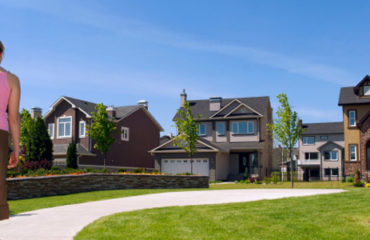Buying vacant land is part of the American ideal of building a home, settling down and starting a new life. Today, there is still vacant land available, but the ownership process is a little more complicated than moving out West and staking a claim. If you keep a few guidelines in mind, you, too, can buy your piece of the American dream and create your own homestead.
Location
Location drives the value of land. Proximity to natural resources, infrastructure, shopping, commerce and other desirable attributes determines how much the land will cost. You must become familiar with the plot of land and the area around it to be sure that it meets your needs. Survey the land and conduct any testing for wells, septic, ease of water and sewer hookup, access to electricity, environmental safety and flooding conditions before purchasing. Many land contracts allow you to make the sale contingent on testing results. You also need to check the zoning for that piece of land to be sure it fits your intended use.
Land Cost
A seller is free to ask whatever he would like for his land, but that does not mean the land is worth it. Market research, including the selling prices and tax values of the surrounding land with comparable features, will help you determine whether you are paying a fair price. You can also use your research to justify a lower offer. Most lenders require land cost for a single-family home to stay between 25 percent and 30 percent of the appraised value of the property, according to Rob Ransom, an Escondido, California, real estate agent, on his Vacant Land Info website. You must make sure that the land cost is not too high for the home you are planning to place on the property and that the area can support the entire value of your land and home. If you buy 10 acres for $100,000 and plan to build a home for $300,000, a lot surrounded by mobile homes on 1 acre may not appraise high enough for a lender to give you the money.
Down Payment
While a combination loan that includes both the purchase money for the land and construction money for a home may not require a large down payment, lenders require between 20 and 50 percent down on vacant land loans. Not every lender offers land loans, so you may need to search to find one, depending on your area. Land loans are typically for a shorter term than regular mortgages–anywhere from 10 to 15 years. Lenders offer these loans at a higher interest rate than traditional mortgages by as much as 1 percentage point or more, according to Bank Rate’s real estate experts.



